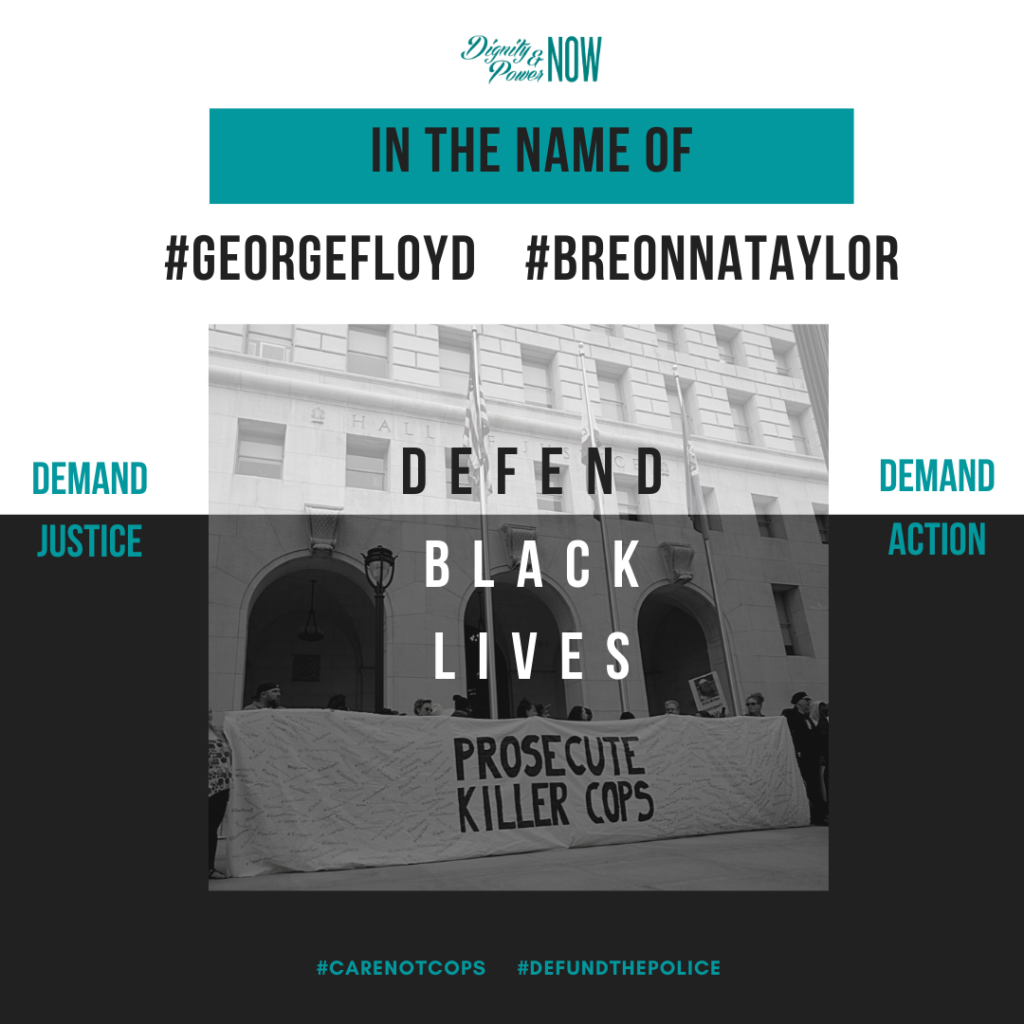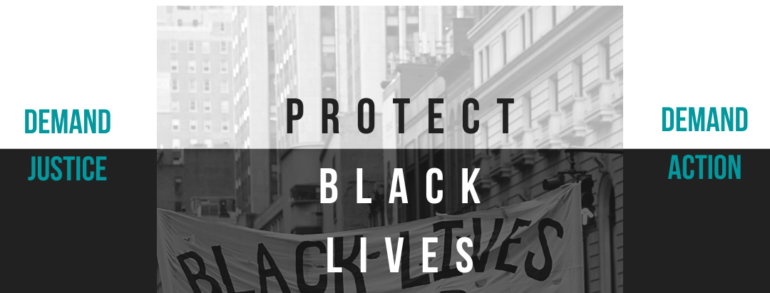
By: Lamia El Sadek, PhD
Managing Director of Dignity and Power Now
On January 28th, 2011, thousands of people took to the streets in Cairo, Alexandria, Suez and all over Egypt – much like what is happening now in America. Over the short period of 18 days, millions of protesters demanded a drastic change to living conditions, dignified treatment for all, and the end of the current regime. As the Police and Army took to the streets to protect the system, over 846 people lost their lives and 6,000 were injured.
In 2011, I was working in Egypt and had been regularly protesting various issues from humanitarian violations to free speech rights and labor rights. The latest uprising in America reminds me of the Egyptian Revolution and the parallels are many.
It is okay to call it what it is – an uprising!
The revolution did not happen overnight, it happened after decades and decades of protesting, of chronicling human rights violations, corruption, and coverups. Decades of making demands, of activists trying different venues such as mobilizing for elections or peaceful protests, and many years of enduring retaliations from the system.
One thing I learned is that a revolution comes in waves, and after each wave the system thinks it is behind them, until one day it erupts with such massive volatility and leaves many wondering – how did it get to this point?
Immediately, a curfew was implemented, not to stop the looting, but to be able to pick protestors out easily. This also fueled the looting, which seemed to always happen during the curfew hours. Protestors were peaceful, went home after protests or stuck around in the streets to help de-escalate.
Protestors and revolutionaries took to the streets during the day, were shot at, camped on the streets and sought medical care. And at night, the looters came out and so did the police. The footage that aired over and over in the media seemed to always be from the night-time when looters, whom many believed to be state agents, seemed to be setting everything on fire.
To further terrify people into submission and despair, the national guard was called. Sound familiar?
Then the cycle we all knew from past protests started again; token resolutions offered, massive waves of retaliation, then criminalization of activists by the state media (state owned, and privately owned yet benefitting greatly from the system/regime).
Meanwhile, the insincere sympathizers emerge, ever-so-wisely lecturing everyone that looting is not the answer and that protesting leads to looting, so better to focus really hard and pray really hard that our voices and ballots will be heard at the next election. They try to slip in the notion that we ought to trust in the system and put our faith in the very same system we rose up to dismantle and bring down.
As we sat there, spending our nights camped out on the pavement and taking shifts to alert the others of the next attack of rubber bullets and teargas, many of us started to doubt ourselves.
We began profound discussions about what truly harms the economy.
The same questions need to be posed at this moment.
What harms the economy – our protests? Or the brutality and violence of the police leading to loss of life? How about the systemic racism, criminalization, and mass incarceration of so many people of color who otherwise would have contributed greatly to society – not to mention the exuberant cost of incarceration.
We must start thinking – why is the economy always the vehicle used to silence people into complacency and submission?
And what is the human cost to prioritizing the economy above all else?
The guilt-trippers are already busy reminding us that business owners are losing money, that we are harming the city, that this harm is unjustified, even in the face of historic and systemic genocide and assassinations of entire generations.
During the revolution, the insincere sympathizers and the guilt-trippers were aptly called “Hizb El Kanaba” or the “Couch Party”, as people with privilege not impacted by the corruption and human rights violations. Yet, they were actively judging and watching their TVs while sitting on the couch.
Recently, photojournalist, Linda Tirado, was shot in the eye by police with a rubber bullet. She is permanently blind in her left eye as a result. There have been multiple reported cases of journalists attacked violently by police.
It is not surprising that police are targeting journalists. The entire premise of transparency and the right of people to know what is going on, can only be damaging to the police if what’s being shown is their excessive brutality and criminalization of people of color.
During the Egyptian Revolution, the State police used the tactic of targeting protestors’ eyes to terrify and disperse them. Over a hundred protestors in Egypt lost their eyes. Incidentally, eyepatches became a symbol of the revolution, a sign of respect. The initial group of protestors were the critical mass needed to inspire change. In fact, police brutality and the intentional injuring and murdering of protestors was the fuel that truly brought millions to join the protestors out in the street. The Egyptians responded by creating an anonymous fund where people would donate for the treatment of all injured during the revolution.
Imposing a curfew and shutting down public transportation further enraged many people who could not find ways to get home from work or meet their basic needs. This is another tool to turn people against the protestors.
After many days full of excitement, despair, tears, blood and pain, many of the revolution’s demands were met. The President was ousted, yet lasting change needs much more work. The lessons from the revolution are many.
While an uprising is born from scores of individuals calling for real change and common demands, when the dust settles, a united front is necessary to implement the demands of the people.



Trackbacks/Pings